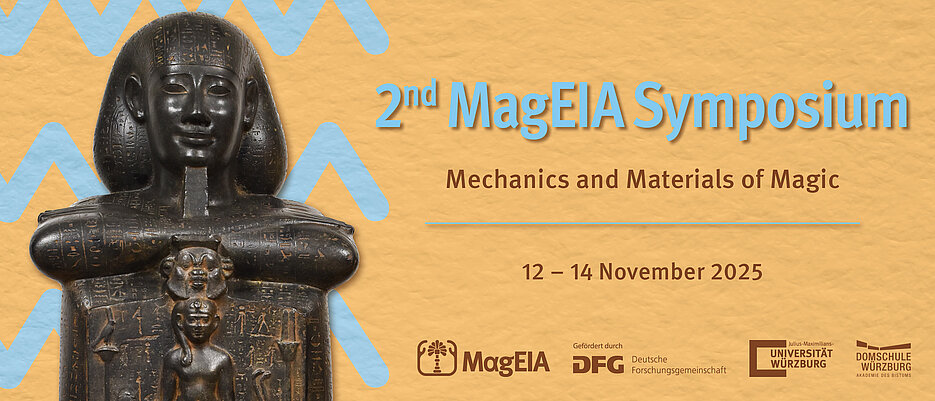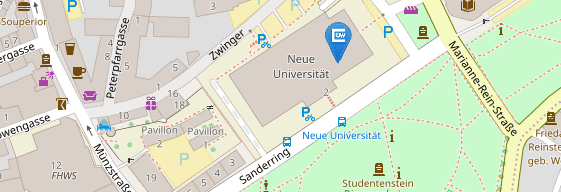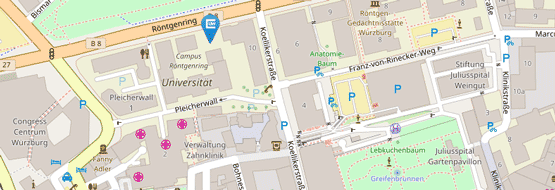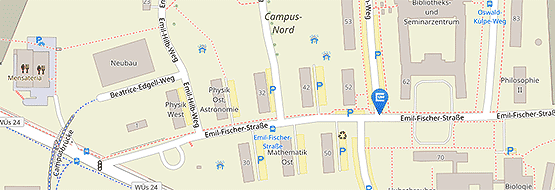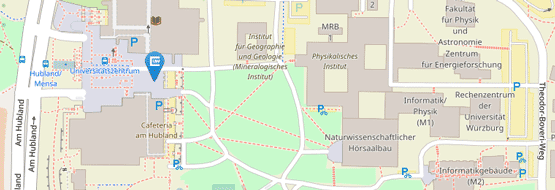Mechanics and Materials of Magic - 2nd International MagEIA Symposium
| Datum: | 12.11.2025, 16:00 - 14.11.2025, 17:00 Uhr |
| Kategorie: | Tagung |
| Ort: | Tagungszentrum Burkardushaus, Am Bruderhof 1, 97070 Würzburg |
| Veranstalter: | MagEIA |
Vom 12. bis zum 14. November 2025 findet das zweite internationale MagEIA Symposium statt. Es handelt rund um das Thema "Mechanics and Materials of Magic".
The DFG Centre for Advanced Studies MagEIA at the University of Würzburg is dedicated to the interdisciplinary and comparative study of magical text traditions of West Asia and the Eastern Mediterranean in antiquity. It consists of a core team of scholars in Ancient Near Eastern Studies, Egyptology, and Comparative Philology as well as a Fellows Programme with a broader disciplinary scope. Each year of the MagEIA Centre is dedicated to an annual theme, which also informs the thematic focus of the annual symposium. In 2025 we want to look at the structure and dynamics of the ritual procedures as well as the materials and symbols employed by the practitioners.
Many ancient magical texts lay out in some detail how specific rituals were to be performed and which materials should be employed in the course of their performance. Whether the purpose of the rites was therapeutic, cathartic, apotropaic, or aggressive, the actions performed by the various participants were designed to enact symbolically the requests associated with the ritual’s performance and thereby lend efficacy and validity to the proceedings. Whereas some principles, such as substitution and analogy, are universal features of ritual practice, the use of materials and objects is heavily influenced by the natural and societal context in which the rituals and their texts were created.
We would like to address in particular the following questions
How is the dynamic transformation intended by a ritual enacted? Which metaphors are used? How is the natural environment integrated into the proceedings?
How do specific ritual actions, gestures, objects, and materials lend validity and persuasiveness to a performance?
To which extent do traditional heuristic concepts of ritual studies (like substitution, analogy, transfer by contact) still underpin the analysis of ancient magical texts? What are their strengths? How do they have to be modified and extended?
How do societal norms (e.g., legal concepts) and the regularity observed in natural phenomena shape the design of magical rituals?
Which characteristics of specific materials prompt their use in ritual contexts? How do qualities like colour, texture, odour, form, weight, solubility, flammability, but also the name or provenance inform the use of such substances?
What do instructions for and descriptions of ritual performances tell us about a ritual’s mechanics and materials? Where are the typical limitations of the extant sources?
How do recitation texts provide information on the interpretation of the rites, objects, and substances by ancient ritual experts and clients? How do the actions, dynamics, and mechanics of a ritual find linguistic expression?
Participation
Participation is also possible online. You need to register online via the registration form.


